With it's bitter, garlicky flavor, garlic mustard pesto is a standby for people that enjoy eating the plant. It's an easy recipe perfect for beginning foragers since the plant has no poisonous look alikes and is highly invasive. I make it a little differently than other pestos though, read on and I'll explain.
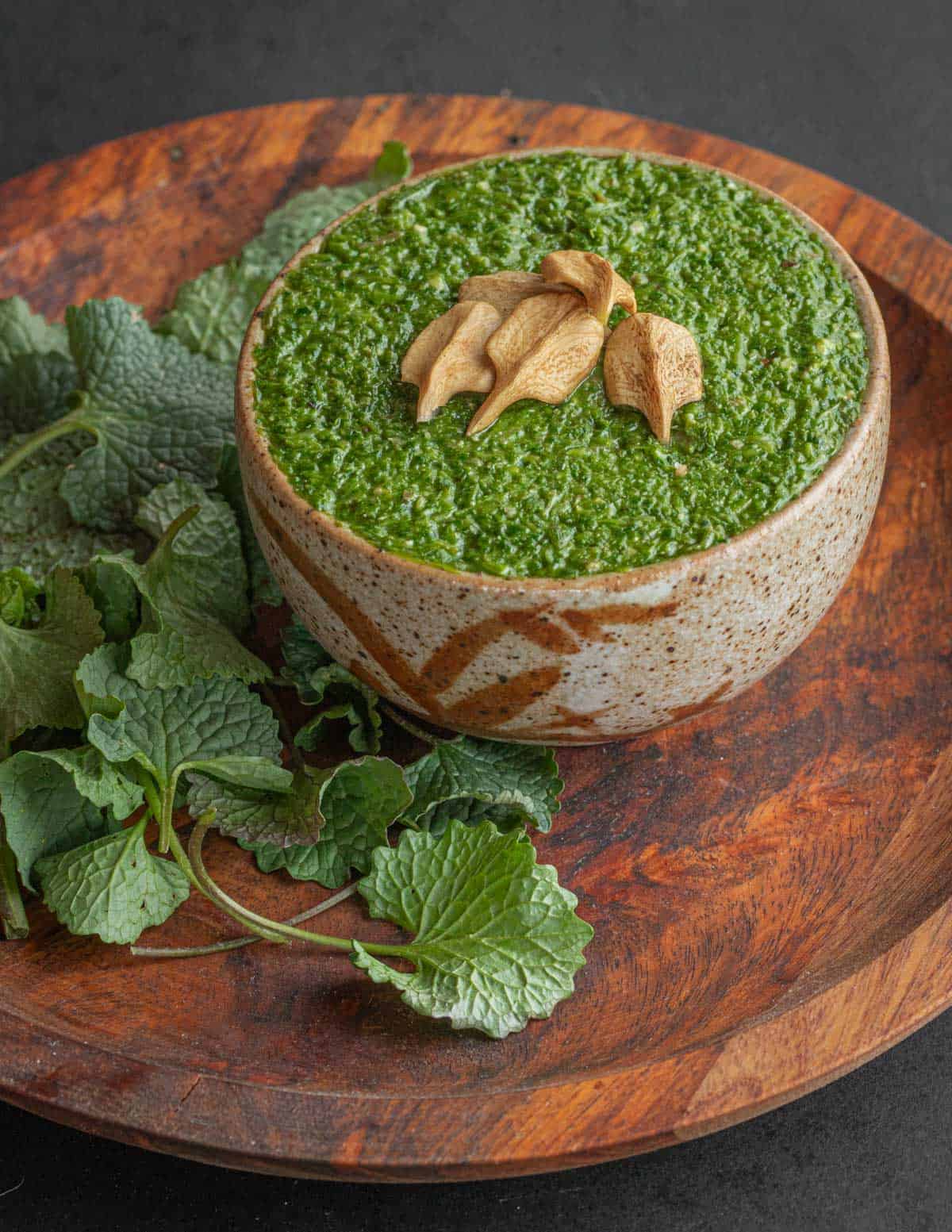
First and foremost, if you don't like bitter greens, consider making a different pesto like nettle pesto. There's a link at the bottom of the post with my recipe.
How to Make Garlic Mustard Pesto
First you'll harvest the garlic mustard plants. If you actually want to inhibit future growth you'll need to remove the whole plants including the roots before they produce flowers.
Trim the greens so that as little stem remains as possible. Wash and clean the greens and dry them.
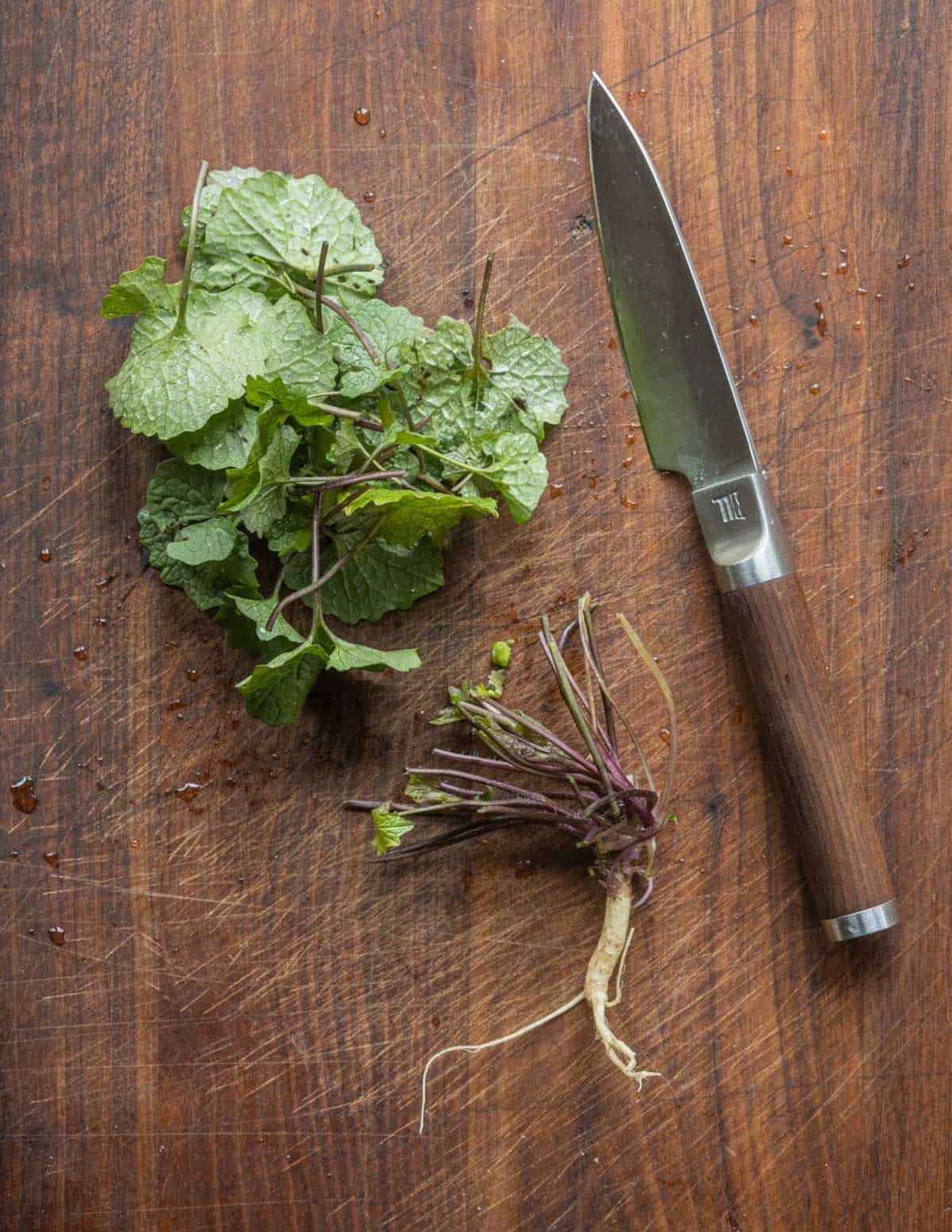
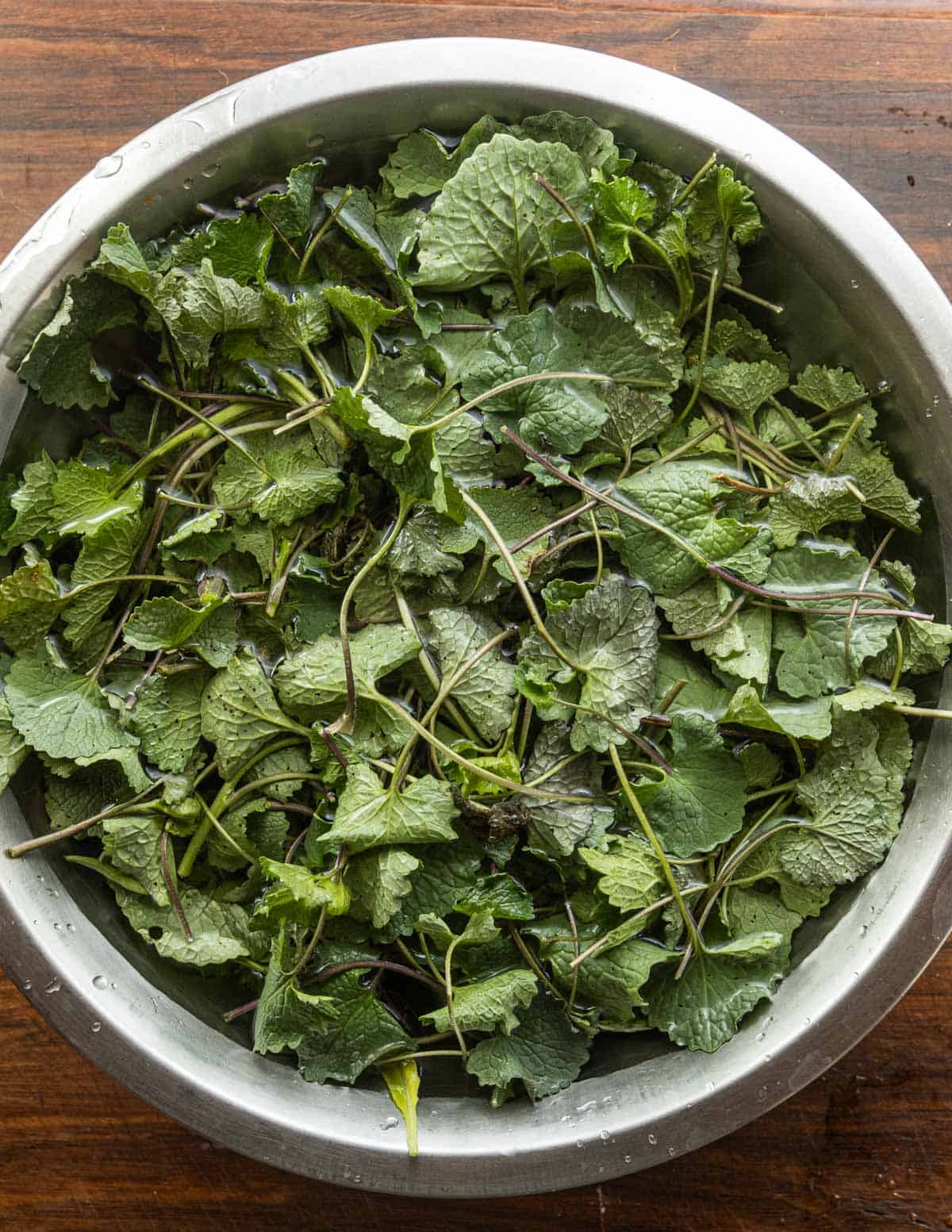

Blanch the greens in boiling salted water until just tender, about 30-60 seconds. If you want to tame the bitter flavor more, soak the greens in water to cover overnight in the refrigerator.
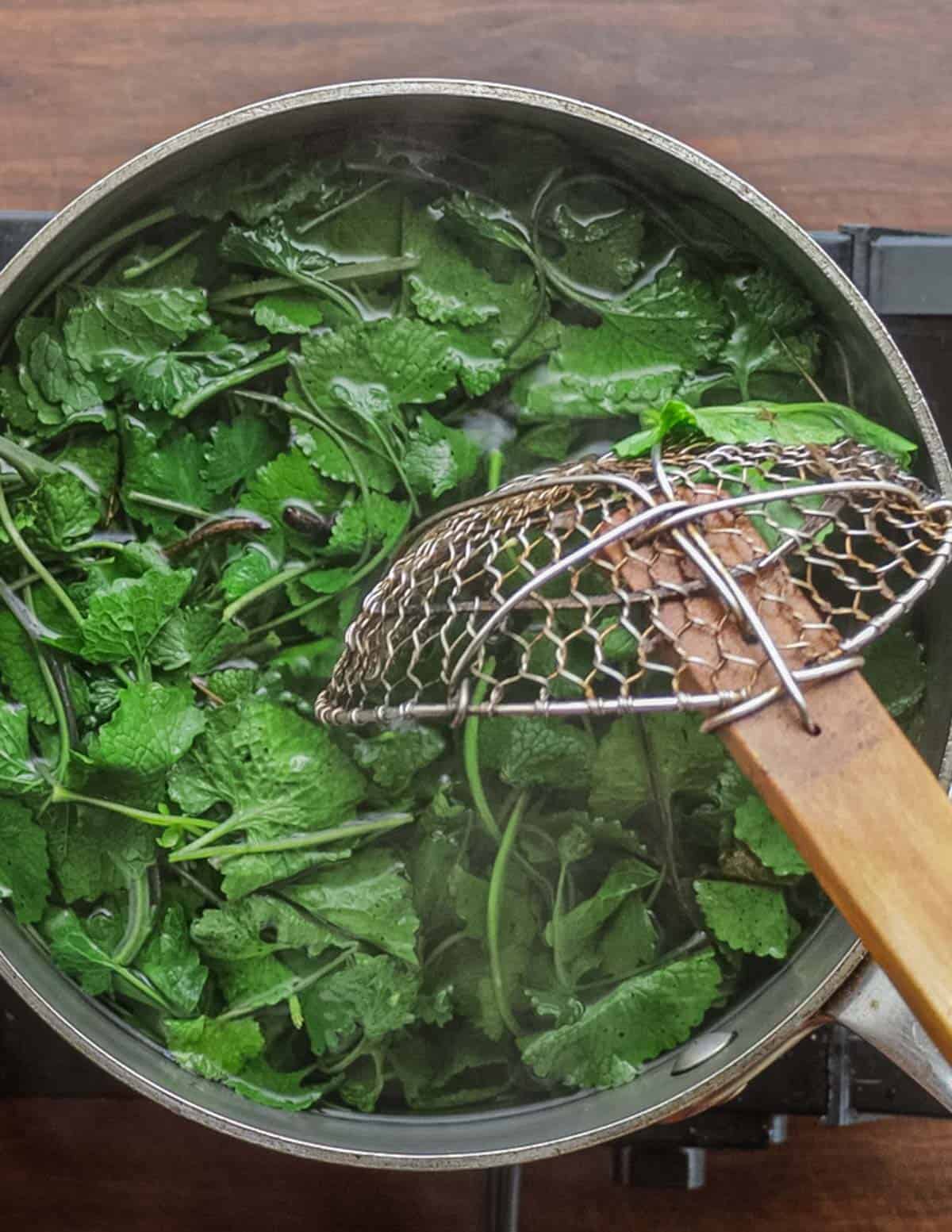
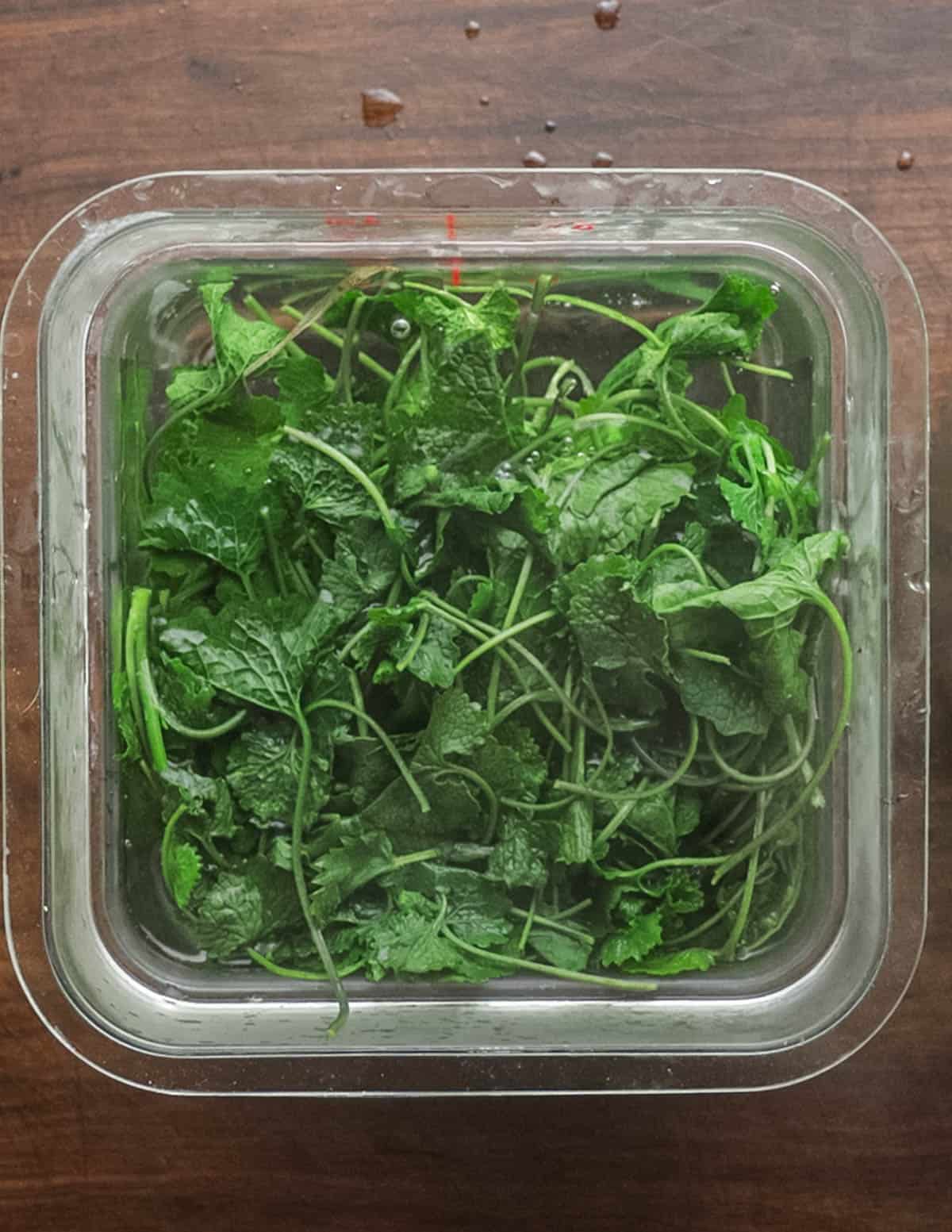
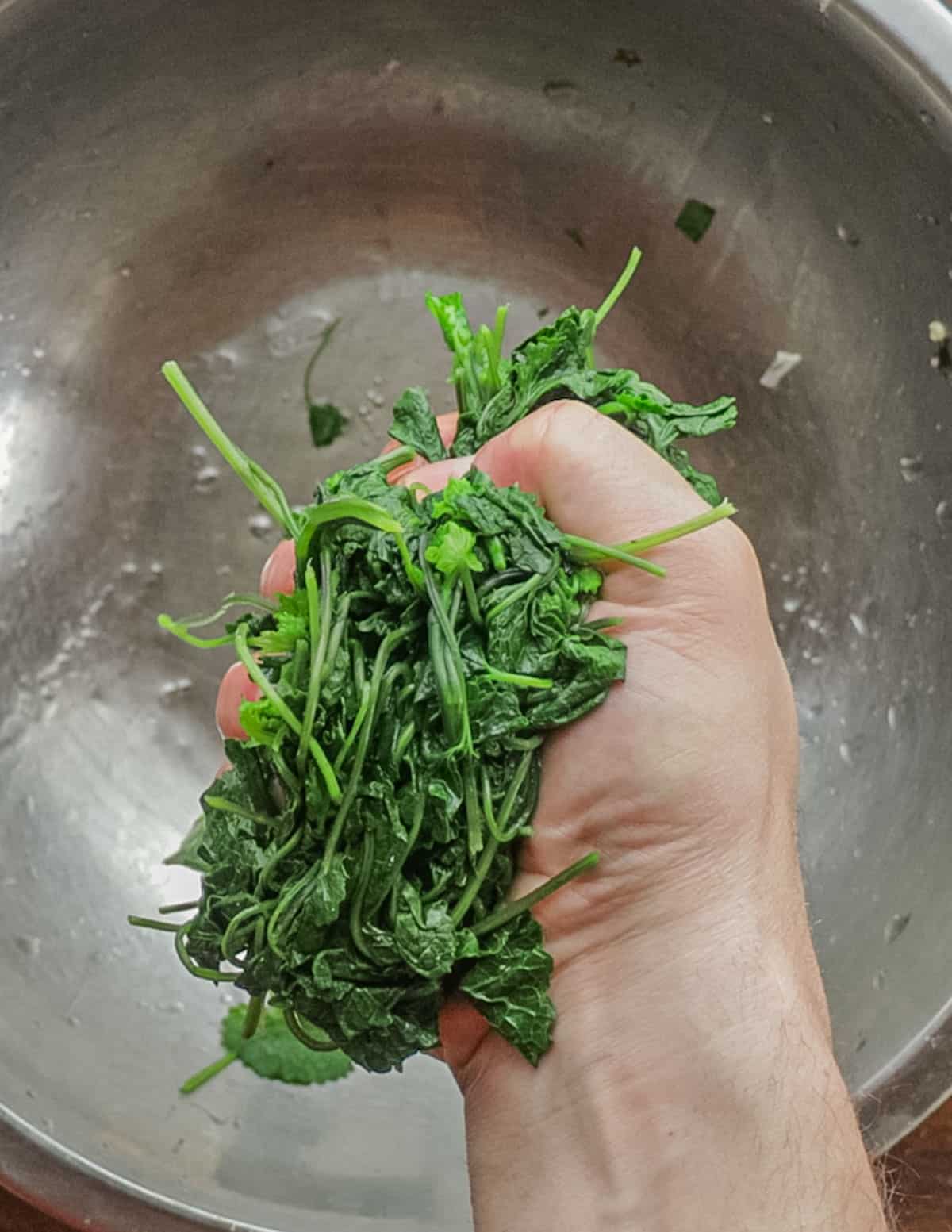
Next the greens and finely chopped using chef's knife. It's important to chop them to ensure there isn't long stems which can have a slightly rougher texture I call grass-clipping pesto.
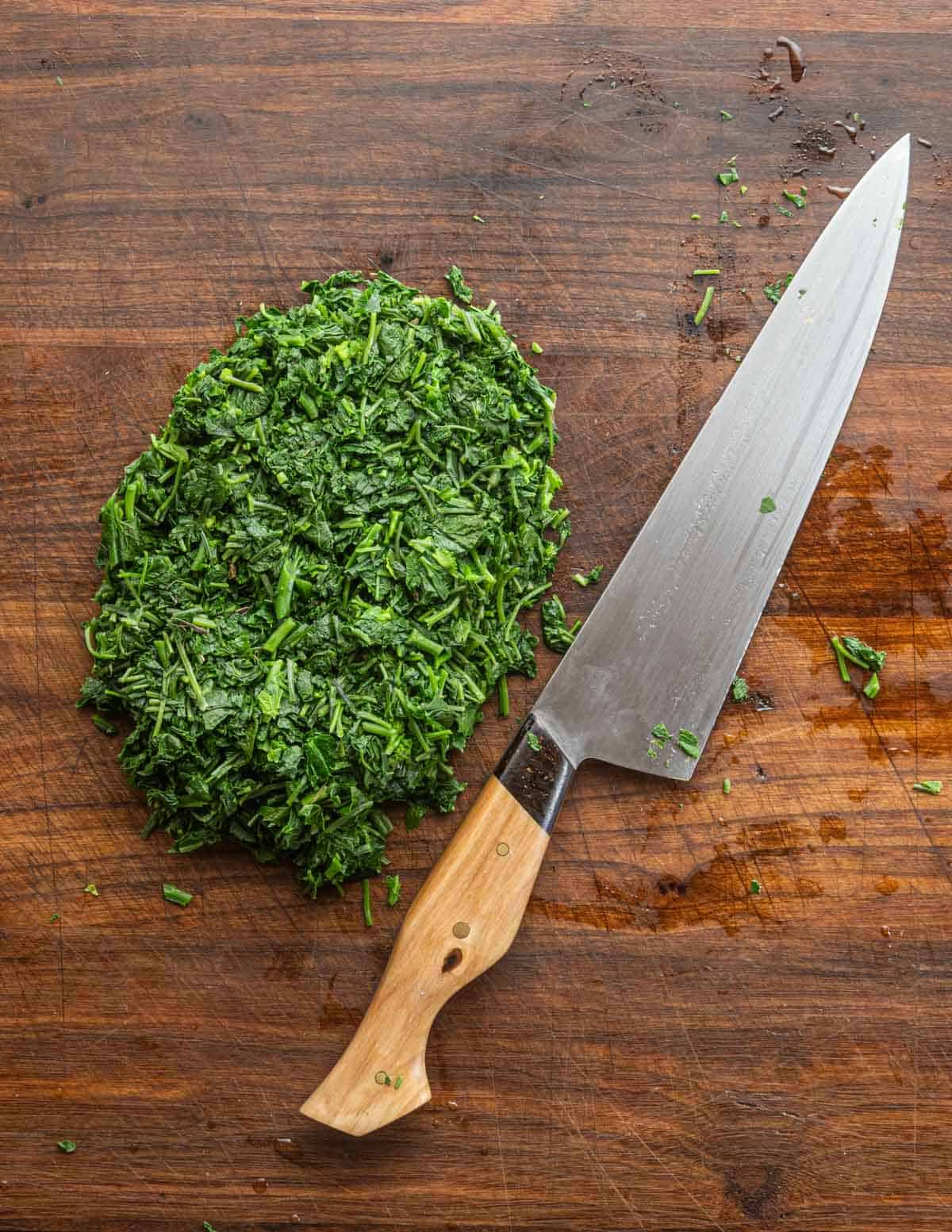
Put the blanched, chopped garlic mustard greens in the bowl of a food processor, add the cheese, nuts, garlic or ramps, pinch of chili flakes and process, drizzling in the olive oil until the mixture is smooth and spreadable.
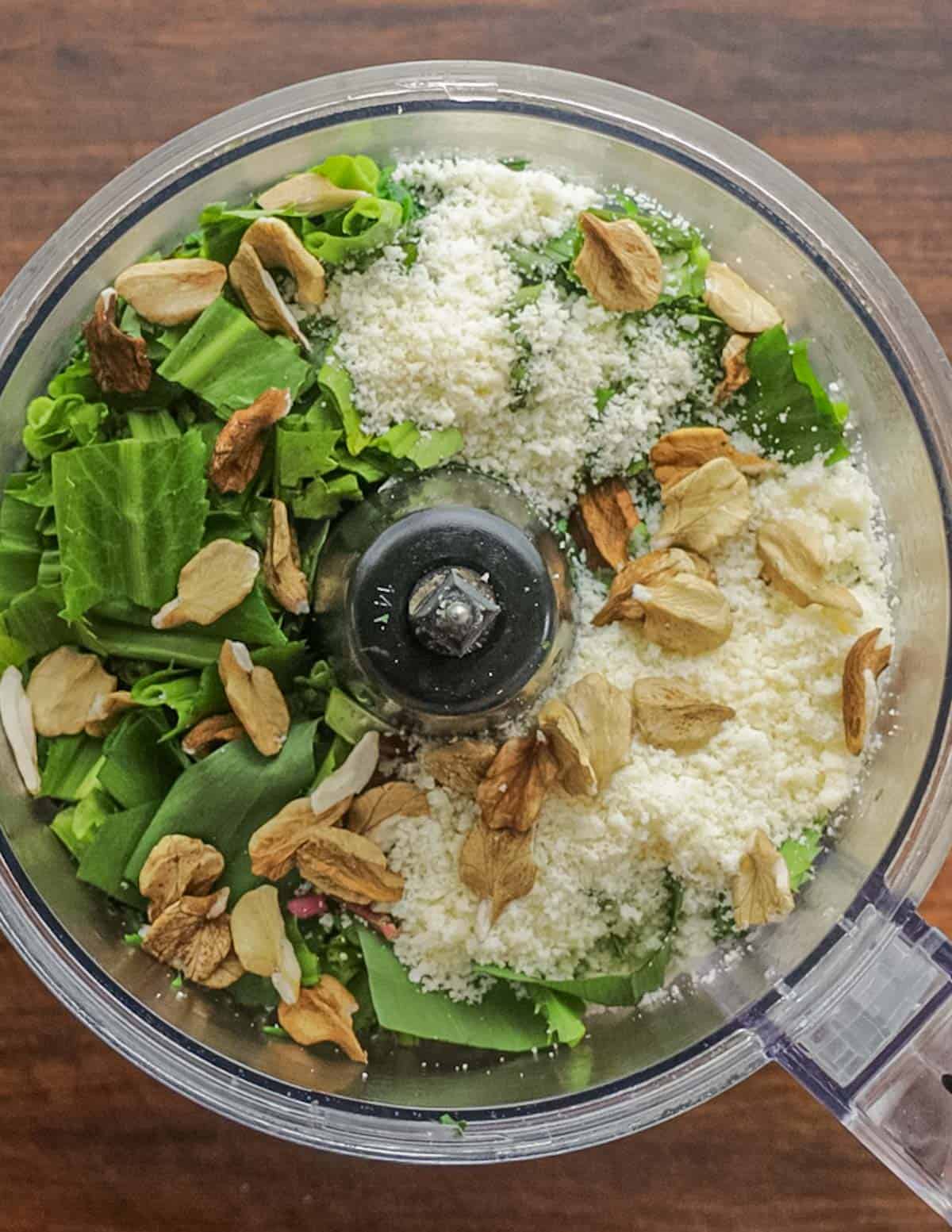
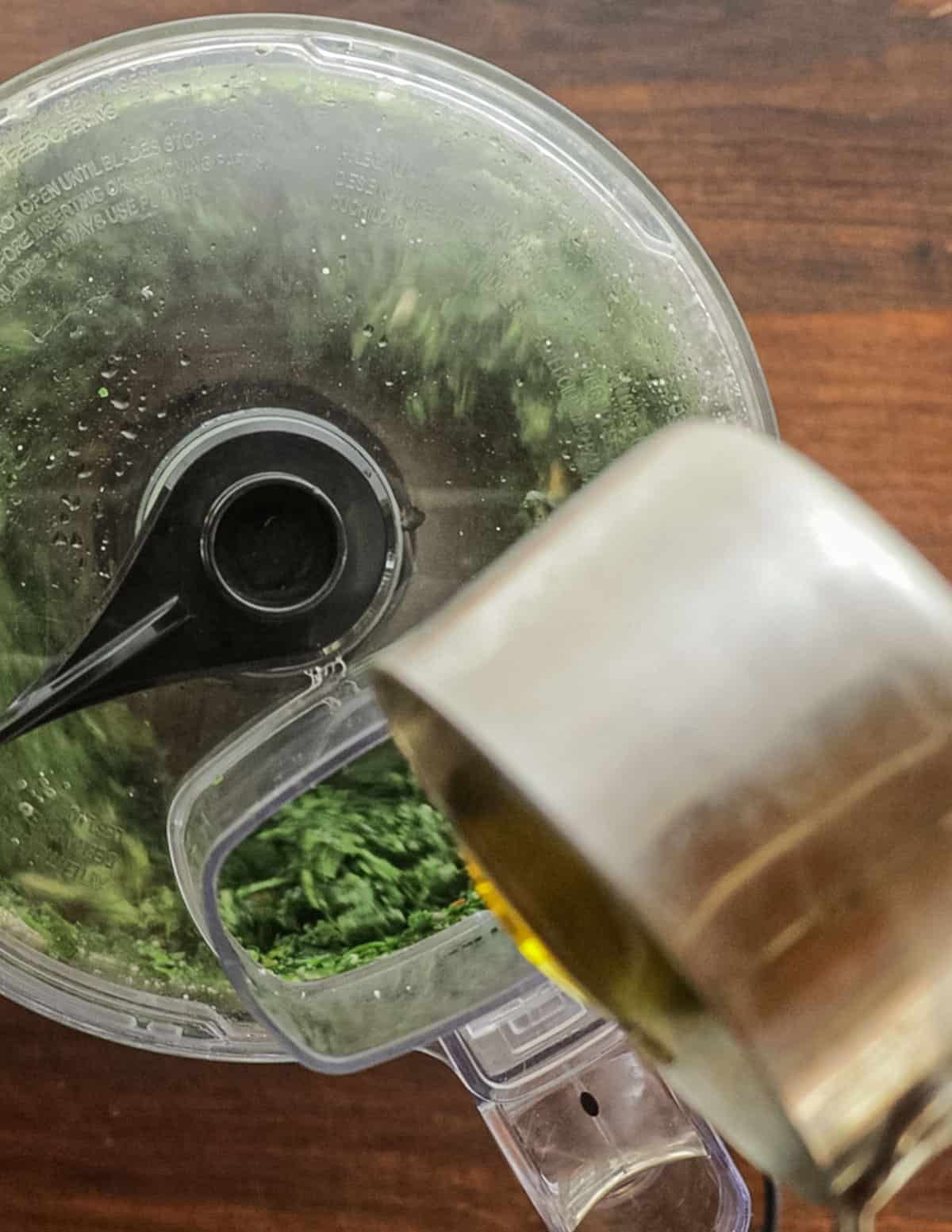
Double check the seasoning of the pesto. Even if you soak the greens it will be quite bitter. Adjust the seasoning a bit, adding a little more cheese, salt, pepper, nuts or lemon zest until you like the flavor.
Transfer the pesto to a jar, cover the top with olive oil. It will keep for a month in the refrigerator as long as it's covered under oil.
How to Use Garlic Mustard Pesto
You can use garlic mustard pesto as a spread on toast or in any recipe that calls for pesto, just remember that it's bitter. To help calm the bitterness, especially if serving to others, here's a few things that you can combine it with.
- Adding roasted, peeled bell peppers to a crostini or pasta with them can add sweetness. Sweet legumes like peas and fava beans can work too.
- Use it as a dressing for cooking vegetables like sauteed zucchini or potatoes.
- Add spicy ingredients like crushed red pepper flakes, or a whole jalapeno to the pesto to help match the strong flavor.
- Cream and fat can help calm bitterness. You can add a splash of heavy cream to the simple pasta outlined below.
Serving the pesto with pasta

To serve the pesto with pasta, cook your noodles until al dente, making sure to save some of the pasta cooking water. Toss the hot noodles with the pesto, adding a splash of pasta water to loosen it. Add another spoonful of cheese, a squeeze of fresh lemon, and mix.
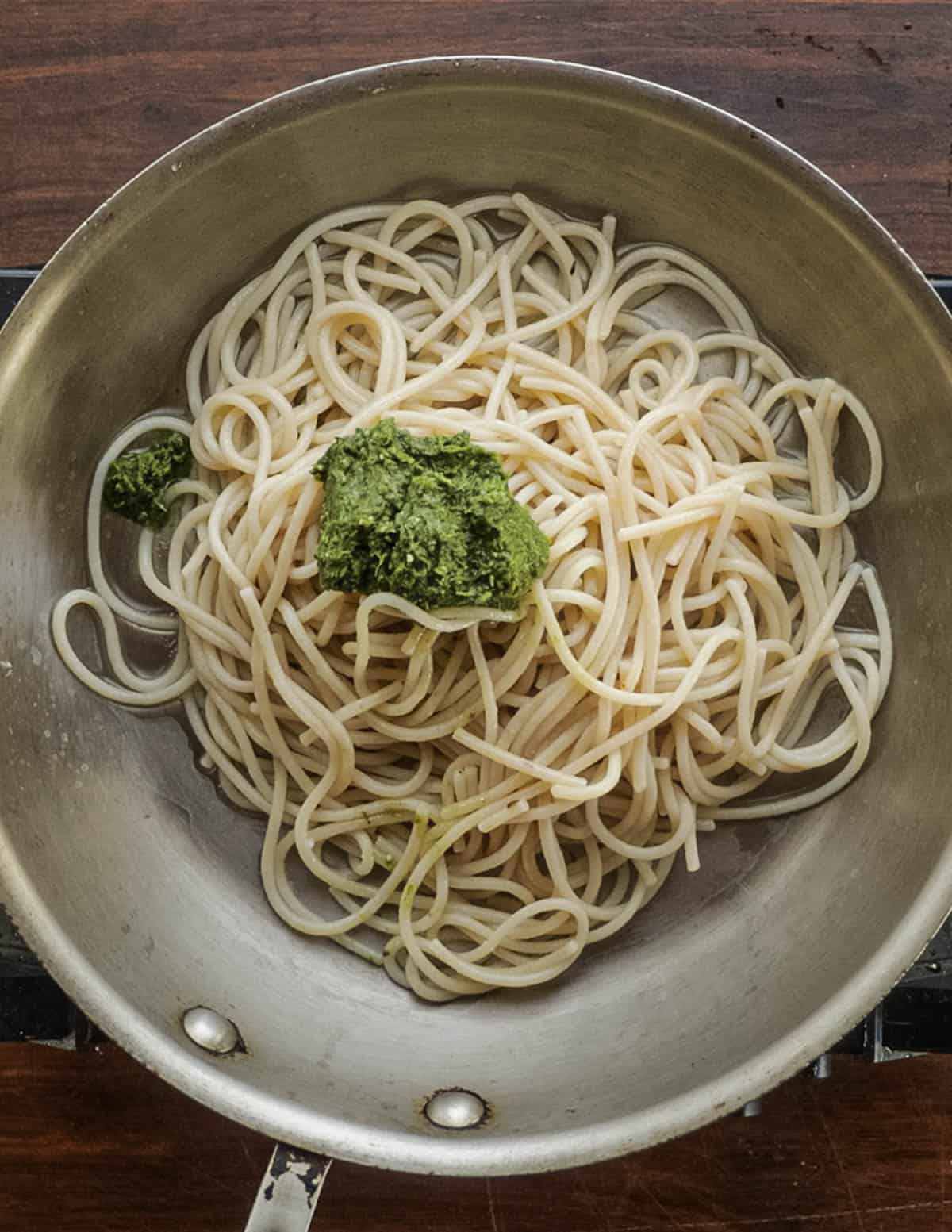
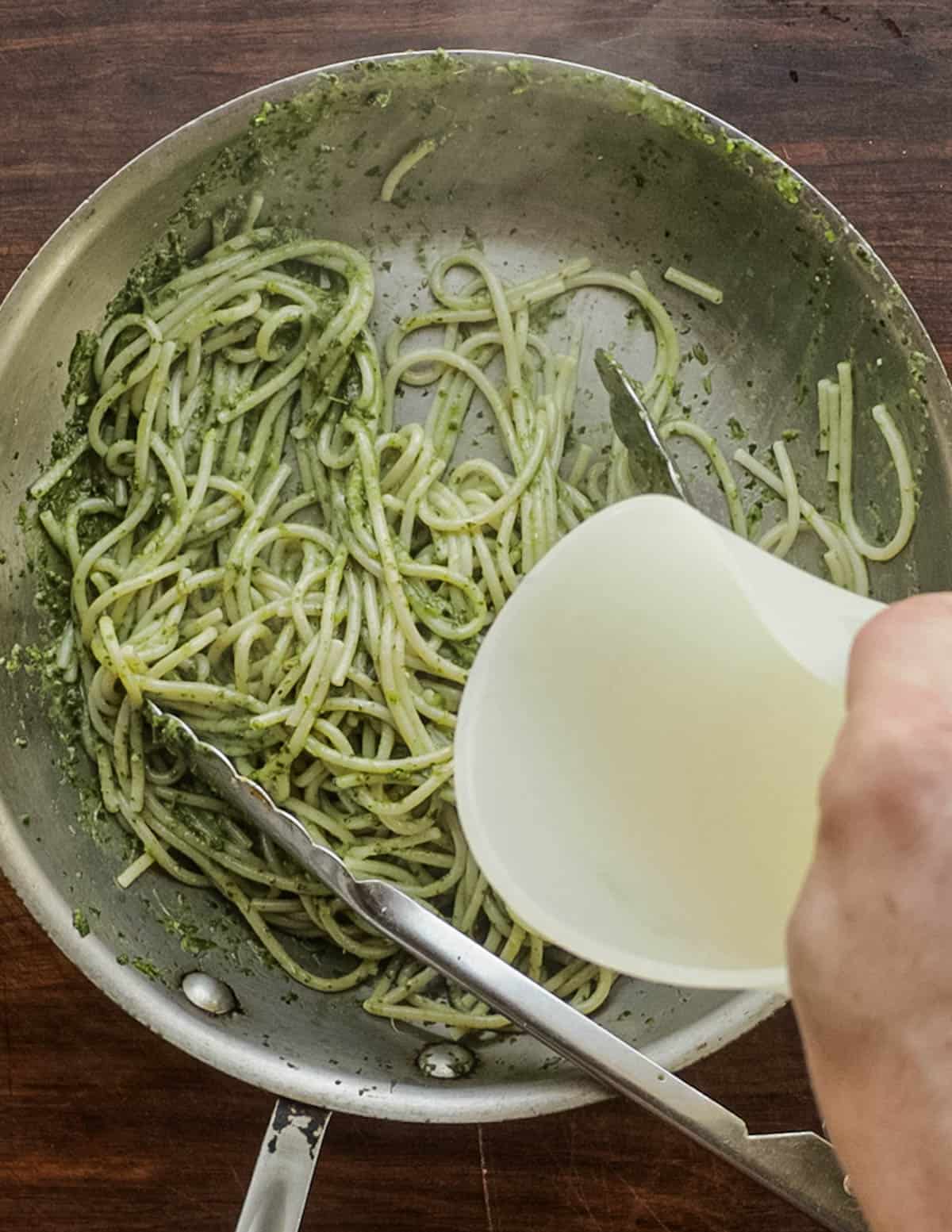
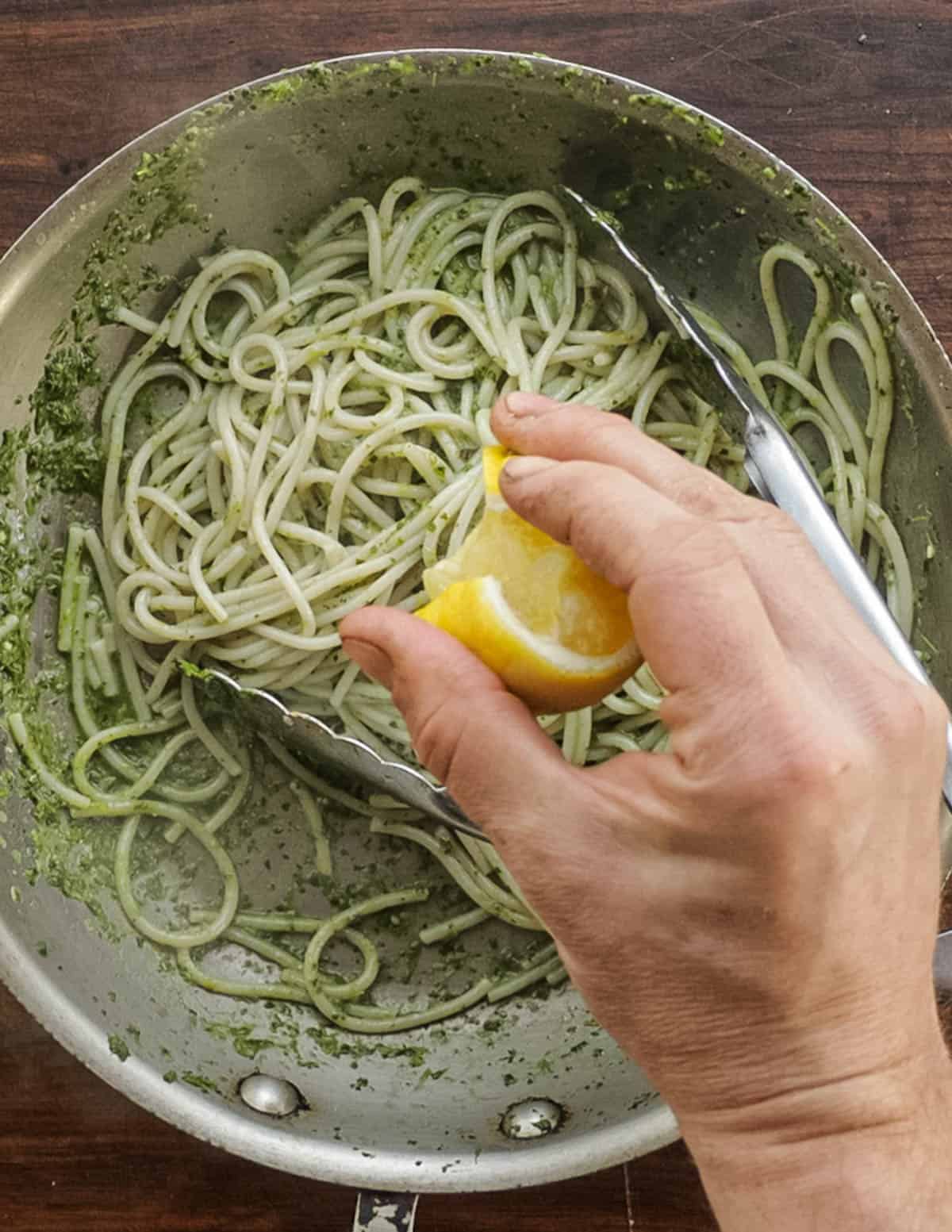
Twirl the noodles into a bowl, spooning any leftover sauce on top. Garnish with cheese and chives, sliced ramp leaves or tiny garlic mustard leaves.
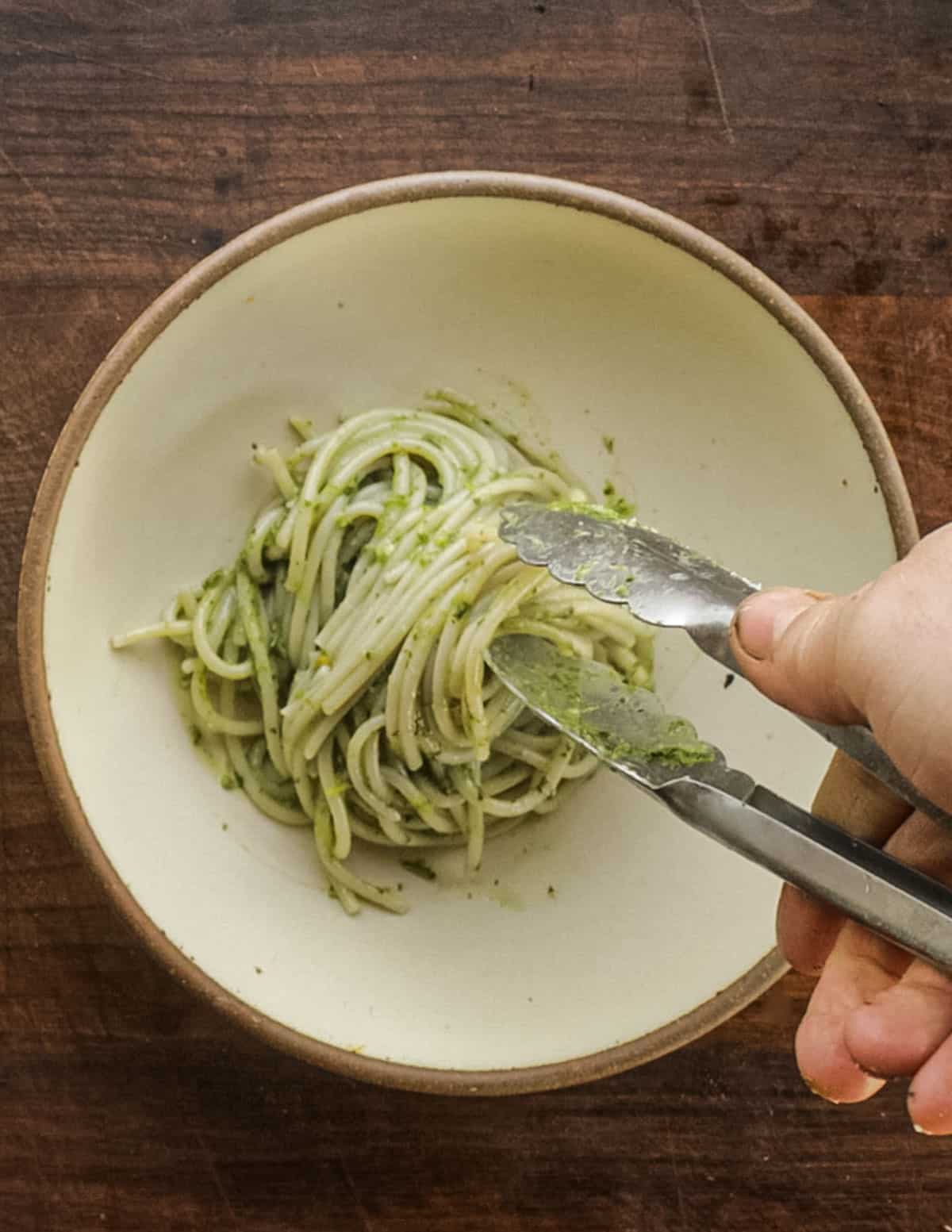
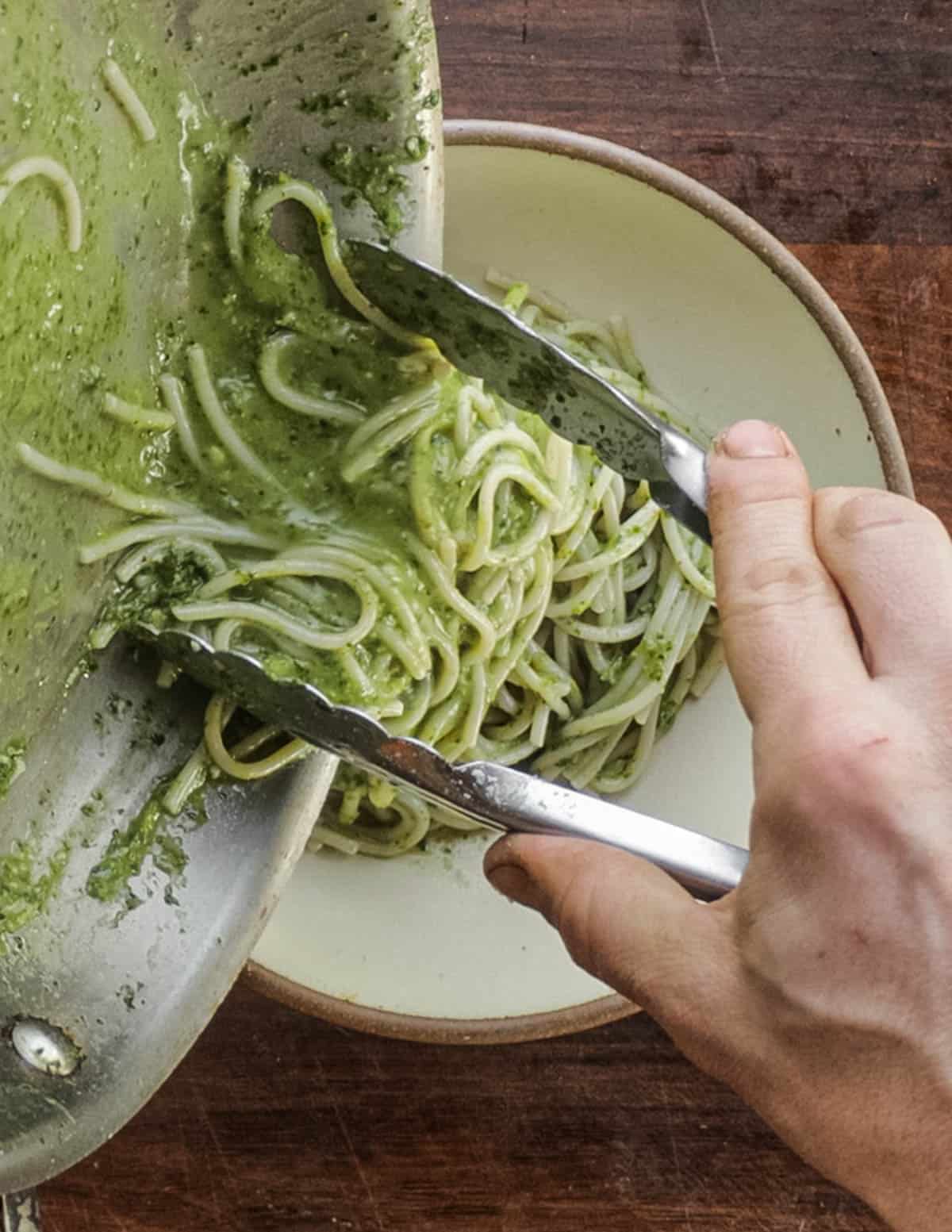
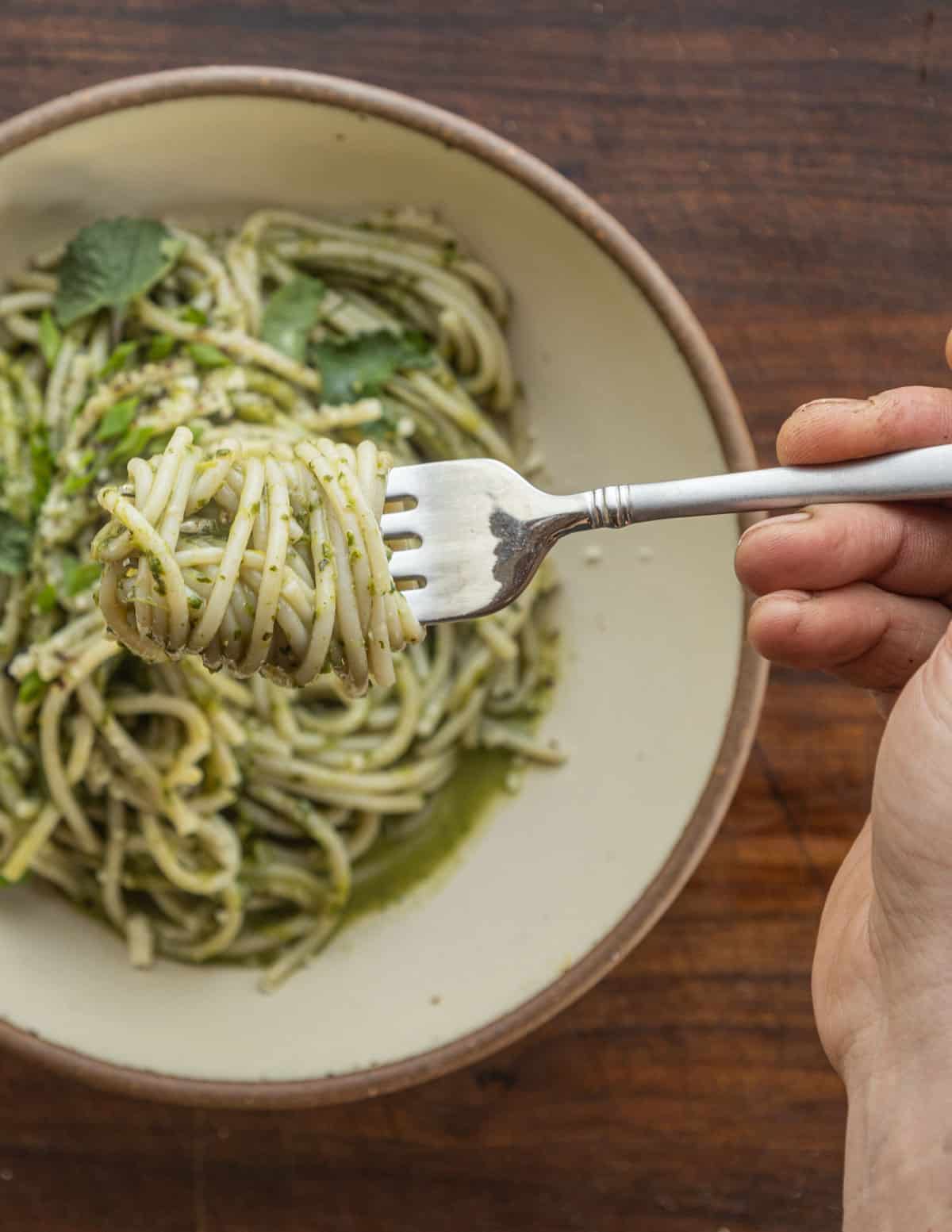
Related Posts
Garlic Mustard Pesto
Equipment
- 1 Pint mason jar with lid
- 1 Spatula
- 1 Heavy chefs knife
Ingredients
- 8 oz fresh garlic mustard leaves
- 2 oz basil mint, lemon balm or cilantro
- 2 T lightly toasted nuts or sunflower seeds
- ½ cup grated parmesan cheese
- ½ cup light olive oil or your favorite oil *see note
- 1 clove garlic or a few ramp bulbs and leaves
- Lemon zest and juice to taste, about ½ teaspoon
- Pinch of crushed red pepper flakes
- Kosher salt to taste
- 2 anchovy filets optional
Instructions
- Wash and clean the garlic mustard leaves. Trim the leaves from the base of the plants, leaving as little stem as possible, ½ -1 inch is fine.
- Blanch the greens in boiling salted water for 30-60 seconds, or until the stems are just tender.
- Remove the greens to a bowl of cold water to cool, then squeeze them dry.
- Finely chop the greens in a cross hatch pattern to ensure there aren’t long pieces of stem which will give you grass clipping pesto.
- Put the chopped garlic mustard leaves in the bowl of a food processor, add the remaining ingredients except the oil and process, drizzling in the oil to make a spreadable pesto.
- Taste and adjust the seasoning for salt, cheese, and lemon zest.
- Transfer the pesto to a jar, cover the top with olive oil to cover and refrigerate. The pesto will last for a month in the fridge as long as it’s covered with oil.

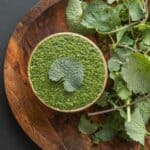
Leave a Reply